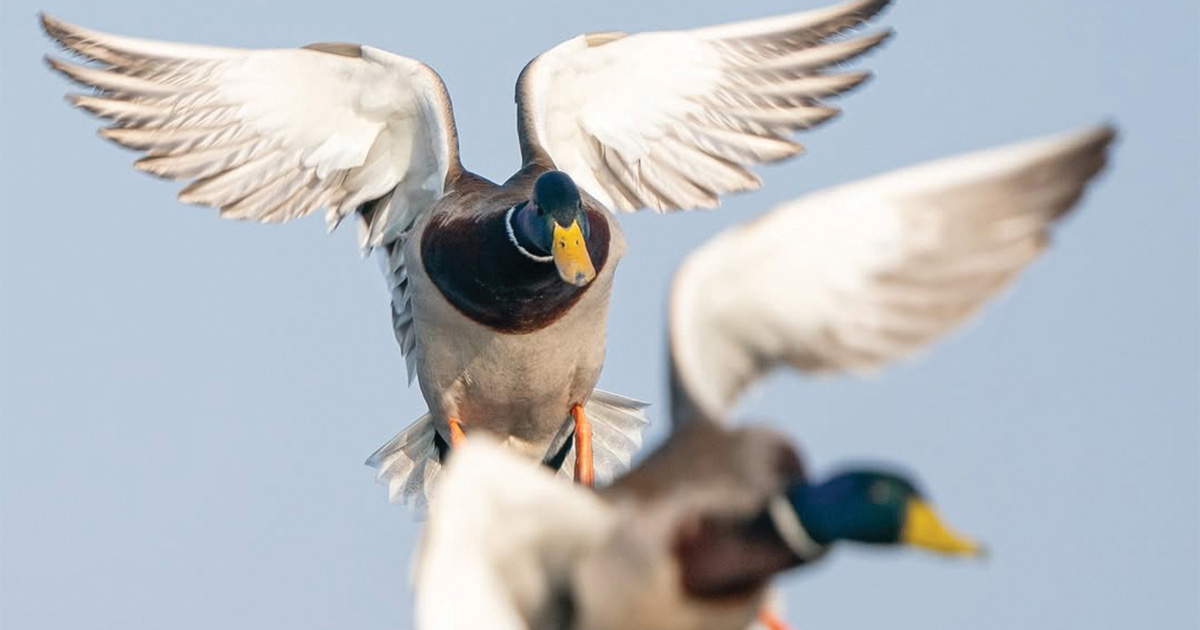Migration Alert: Waterfowl Migration Increases Across Michigan
Nov. 6, 2025 – Mississippi Flyway – Michigan
Nov. 6, 2025 – Mississippi Flyway – Michigan

Waterfowl hunters across Michigan are reporting increased waterfowl movement and not a moment too soon. Recently, several small cold fronts have kickstarted the migration, and fresh birds have been building in traditional hunting hot spots.
In the Upper Peninsula, for weeks most hunters did not see many ducks on the east side, but things changed fast. Last week, astounding numbers of redheads, mixed with some lesser and greater scaup, packed into large bays along the eastern UP.
Heavy hunting pressure scattered these mile-long rafts, and given reports from downstate, pushed some ducks southward. Of note, the beginning of the long-tailed duck migration occurred during this period as well, with decent numbers showing up in the usual spots, including Saginaw Bay. Also, often considered a bellwether of late migration, goldeneyes began moving through the UP in good numbers late last week.
“We are seeing a small number of new birds almost daily right now,” says Michigan Department of Natural Resources (MDNR) Wildlife Technician John Darling, who is located at St. Clair Flats Wildlife Area. “On ducky weather days the hunting has been very good, but the trickle of new birds has been keeping things interesting even on slower days.”
“I’ve been hearing increasing reports of divers on Lake St. Clair and know some longtails have arrived on Lake Huron too,” Darling adds. “I expect the combination of this full moon and the forecasted cold snap and possible snow Sunday and Monday will really crank things up.”
This information certainly jibes with what Jeremy Ullmann, MIguideservice owner and guide, is seeing. “We have lots of birds around, but many are staying on the Canadian side [of Lake St. Clair] due to ongoing angler boat traffic over here pushing them off—which is no surprise given how good this lake fishes during warm falls,” he says. “I did see quite a few redheads and bluebills moving around the past few days, and these are likely new birds capitalizing on the plentiful food in the bays.”
On the opposite side of the state, drought conditions stifled early season efforts with very few options for waterfowlers to work with, as most wetlands were dry or stagnant. Pumping water was futile until recent heavy rains provided desperately needed relief. While the impacts of drought are still notable, fall rains have become more consistent just in time for an increase in migration.
“Water levels are looking better; however, many shallow-water wetlands remain low or dry across the region,” says MDNR Wildlife Technician Mike Richardson at Allegan State Game Area in southwest Michigan. “Goose and duck numbers are increasing, along with an impressive number of puddlers and divers showing up in the last week. Canada geese, mallards, gadwalls, black ducks, and ringneck numbers were particularly impressive this week. Looking at the forecast, we should see another good push this week and into the weekend.”
Stay up to date with the latest migration information.
Ducks Unlimited uses cookies to enhance your browsing experience, optimize site functionality, analyze traffic, and deliver personalized advertising through third parties. By continuing to use this site, you agree to our use of cookies. View Privacy Policy